Sukanya Verma in Mumbai
In this new series starting today, we re-visit fabulous Hindi film classics. We start with Dev Anand's Taxi Driver (1954).
Already a star with hits like Ziddi, Baazi and Jaal under his belt, Dev Anand looked for stimulating creative opportunities in his less-than-a-decade old career.
The idea of Navketan's Taxi Driver came about after a friend of Dev Anand suggested he should try and play a cabbie in one of his films considering their widely fascinating, street-smart, practical and resilient distinction.
And so, he roped in elder brother Chetan Anand (who hadn't had much to gloat about since the Cannes champ, Neecha Nagar) to helm the project while their youngest sibling Vijay 'Goldie' Anand (still an active-in-dramatics student of St Xavier's College) grabbed the chance to prove his mettle in writing. He co-wrote the story with his sister-in-law Uma (married to Chetan Anand) as well as penned the dialogues of Taxi Driver.
Gifted even as a rookie, his words bear the wisdom of experience as witnessed in a drunken exchange between Dev Saab and Johnny Walker, 'Duniya gol hai. Duniya golmaal hai. Duniya gol toh hai. Par maal kidhar hai?'
Shot on a modest budget, Taxi Driver is the kind of film that relies on deft impulses within available resources to whip up something truly memorable.
Bombay: A key protagonist
Image: A scene from Taxi DriverTaxi Driver is set, somewhere in the middle of 1950s, when the city of dreams was crowded but not exploding with people and double deckers, trams and bulky cars embellished its roads; speeding locals reigned supreme while the sea was filled with tiny boats.
The opening credits capture this bustle and still-developing skyline as a cab drives past the scenic seaside to arrive at the city's greatest landmark, The Taj Mahal Palace Hotel.
Indeed, the City of Bombay (as it was known then) is credited among the key protagonists of the feature and its commercial culture is captured through old advertisements of Gold Spot (the orange soda beverage), Polson's Coffee and Butter and blatant promotion of Coca Cola in several scenes.
Chetan Anand swiftly builds a specific ambience, which is a mix of abundant outdoor scenes shot around hotspots in town or inside the taxi and two interior sequences -- a murky nightclub (featuring jazz band Vernon Corke and family in a cameo) and the titular hero's tiny apartment.
Speaking of Hero, that's the moniker our handsome taxi driver goes by.
There's no cheesy reasoning like Raja Hindustani's but Dev Anand says this one statement ('Mera naam Mangal hai lekin yaar dost Hero pukarte hain, Hero!') with such confidence and charm, it's not hard to tell why.
What you see is what you get
Image: A scene from Taxi DriverWhat you see is what you get. Know the type?
Hero is just not like that. A migrant from somewhere in Delhi or thereabouts, he talks rough, smokes like a chimney (would lead to disclaimer overload in today's times) but extremely friendly and genial, goes out of his way to help his somewhat loony, perennially broke friends squandering their time in gambling and drink by lending them money or his taxi, a weighty Hillman Minx.
Nevertheless, this gang of oddballs, led by the reliably entertaining Johnny Walker, who pretends to be drunk all the time for some unexplained reason, does come to his aid in the hour of need.
And there's his tender side. He flirts with Sylvie (Sheila Ramani), an Anglo Indian club dancer who clearly has more feelings for him than he for her.
Around the same time, he offers shelter to an aspiring small town singer Mala (Kalpana Kartik) after rescuing her from a couple of goons.
These hoodlums, of curious moustaches and striped t-shirts and scarves, weave a sub-plot involving the mafia-Bollywood nexus against an understated romance triangle.
There's one amusing scene that underscores the woes of a director even then. After the financier suggests to a producer how Mala is good enough to be both a singer and a leading lady, the powerless director timidly gives in, 'Arre sahib meri rai kya ho sakti hai? Meri rai wohi hai jo aapki aur Seth Sahib ki hai.'
The women in Hero's life
Image: A scene from Taxi DriverEven though the women in the film cater to the stereotype of contrasts, it, more than anything, reflects the conditioning of that period.
And so the girl Hero adores chants verse from Ramayana and is hopelessly gullible whereas the girl Hero trifles with is unmistakably westernized shows off her cleavage and dances seductively in front of strange men without feeling apologetic.
Mala and Sylvie are very different women but they're both fundamentally good and love Hero unconditionally, as they prove at individual turns.
In Hero's case too, it's not chauvinism but a genuine need for warmth and acceptance that dictates his choice.
Out of sheer jealousy over Mala, Sylvie berates Hero and his humble professional standing in the strongest words.
A deeply wounded Hero takes her insults to heart and uncharacteristically drowns himself in drink and breaks down in front of Mala, who doesn't judge him.
Perhaps it's this very quality, which he strongly exhibits too, attracts him to Mala with a strong need to both -- protect and assist her in her ambitions even at the cost of losing her.
Taxi Driver packs in noir elements with style
Image: A scene from Taxi DriverEssentially a relationship story examining love under the most unexpected circumstances, Taxi Driver packs in some distinctly noir elements with style.
Shot using an Eclair movie camera, V Ratra's marvelous compositions and low-key lighting as well as a burly dose of startling shoot-outs, blood and gore (it's 1954 and bleeding characters or torture (by tickling) are not commonplace) and slyly-executed heists by men in suits and ties reflect a keen Hollywood aesthetic.
Chetan Anand uses various techniques and camera angles to suggest moods of anxiety and tension.
In a scene, where Hero finally decides to try a hand in cards with all he's got, there's no background music, just throbbing beats to suggest the inner palpitation of the players at risk.
Even the climax, though slightly sad, uses frames inhabited by Sylvie, Hero and Mala instead of words to convey two sides of a sacrifice -- heartbreak and gratitude.
Natural performances
Image: A scene from Taxi DriverNatural performances from its cast add to Taxi Driver's strength.
As an aside, radio host Ameen Sayani's elder brother and an eminent personality in the field himself, appears in a brief role of a magician who tries to hit on Mala.
Other than Vijay Anand's writing debut, the 1954 hit marks the introductory film of former Miss Simla Sheila Ramani.
The dimpled lady looks ravishing and performs quite a few elegant cabarets, Aye zindagi aaj raat jhoom le stands out in particular, designed in S D Burman's lilting soundtrack.
Ramani worked with the same team again, two years later, on the breezy Funtoosh.
Meanwhile, Funtoosh is what Hero and Sylvie address each other throughout the film. Dev Anand and Kalpana Kartik got secretly married during the making of this film and their chemistry is unmistakable.
Her cuteness and his charisma lead to hilarity when she's forced to chop off her hair and parade as Rajput, the cleaner boy in an oversized bodysuit.
In this reverse My Fair Lady, Dev Anand trains her in the art of profanities. It's a classic moment many a rom-coms have feebly attempted to adapt since.
Dev Anand: The star of the show
Image: A scene from Taxi DriverDev Anand, of course is the star of this show.
Yet to be weighed down by the burden of his popular mannerisms, he is exuberant but not effusive, dramatic but not theatrical.
You feel his desolation when he's lying lonely on an unbelievably deserted Juhu beach with Talat Mehmood's soulful Jayen to jayen kahan playing on his lips.
You indulge his care-a-damn attitude when he's having his que sera sera moment with his set of cronies to Kishore Kumar's mirthful rendition Chahe koi khush ho.
You admire his pride and integrity when he explains the difference between car and taxi, 'Motor aamiron ki naukar hoti hai. Taxi garibon ki annadaata.'
And true to this sentiment, the screening was attended by all the taxi drivers in the city. In his autobiography, Romancing with Life, the late legend notes, 'It is our film,' they all took pride in proclaiming, and pronounced me their hero.'

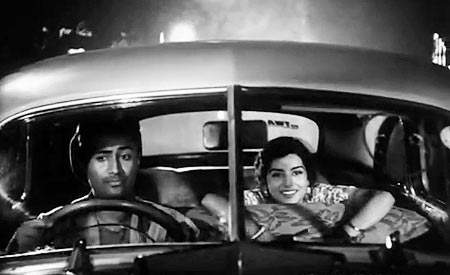
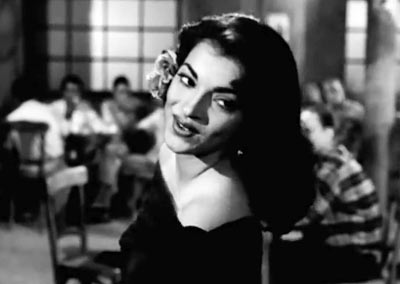
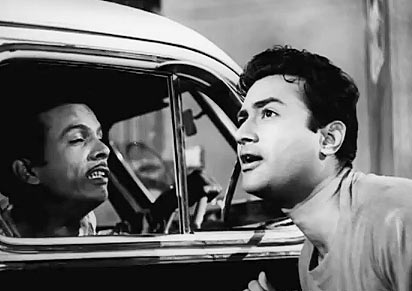


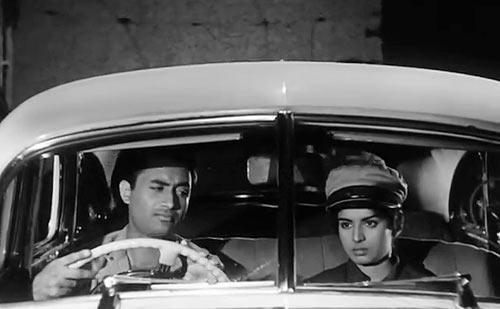
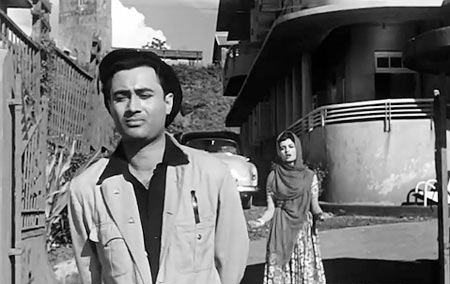
Comment
article